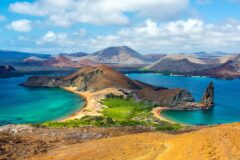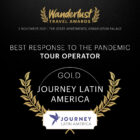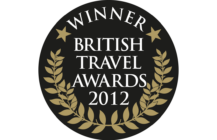Private Journeys
Antarctica: In search of the Emperor penguin
15 days
from £13,660pp

Overview & Highlights
Cruise beyond the Antarctic Peninsula to the Weddell Sea in search of Emperor penguins, aided by helicopters.
- City tour of Buenos Aires
- Shore and Zodiac excursions on the Antarctic cruise
Rather than just taking a cruise along oft-sailed routes, why not be part of a true expedition style voyage? As a passenger on a sturdy ice-strengthened vessel, travel east beyond the Antarctic Peninsula towards the Weddell Sea. Here, the only ‘accessible’ emperor penguin rookery in the peninsula awaits on Snow Hill Island.
The route is rarely navigated and ice conditions can make progress slow and sometimes impossible, but, if the weather and ice are favourable, onboard helicopters will lift passengers to a location around a 45 minute walk from the rookery (so as not to disturb the penguins), and you will continue the journey on foot. If the ship doesn’t make it as far as Snow Hill, it will position itself on the edge of the ice to try and spot lone emperors heading out to open water, and there may be trips by helicopter to search for individual birds in alternative locations.
Whatever the outcome, the beauty and emptiness of the wild and untamed Weddell Sea – with its striking tabular icebergs and abundant and varied life forms – will make this an unforgettable expedition of a lifetime for all on board.
Please note: Many Antarctic expedition cruise operators offer early booking discounts and other restricted offers that depend on availability. Our advertised prices do not take these into account. Contact one of our Travel Experts for the best available rates.
Outline itinerary
Day 1
Arrive in Buenos Aires. Transfer to your hotel in Recoleta.
Day 2
Guided walking tour of Recoleta and Retiro.
Day 3
Fly to Ushuaia, Tierra del Fuego, transfer to your hotel.
Day 4
Transfer to the port to embark MV Ortelius and set sail.
Days 5-6
At sea en route to the Antarctic Peninsula.
Days 7-10
Reach the Weddell Sea, search for Emperor penguins.
Day 11
Visit Half-moon and Deception islands.
Days 12-13
At sea en route to Ushuaia.
Day 14
Disembark in Ushuaia and transfer to airport for flight to Buenos Aires.
Day 15
Transfer to the airport for your international flight.
Itinerary
Day 1
Arrive in Buenos Aires. Transfer to your hotel in Recoleta.
You will be met at the airport and escorted by one of our local representatives to your hotel in the chic residential district of Recoleta where the architecture is evocative of French belle époque and Italian influence.
Buenos Aires as a whole is an elegant, cultured and cosmopolitan city famed for its interesting museums and the fascinating port district of La Boca, with its cobbled streets and brightly painted houses. It was here that the tango was born, and Diego Maradona honed his footballing skills.
The centre of town is home to the colonial heartland, government buildings and churches, as well as chic shopping districts, which have a nostalgic Parisian feel. The bohemian quarter of San Telmo is full of quaint old houses interspersed with antiques shops, tango bars and classy restaurants.

Day 2
Guided walking tour of Recoleta and Retiro.
Looking to the Old World for inspiration, leading families sought to replicate the graceful architecture of Belle Epoque France, covering the upmarket residential areas of Retiro and Recoleta with palatial façades lining shady cobbled boulevards.
This walking tour takes you to former palaces and mansions which now have much more practical functions; the Military Society, the Ministry of Foreign Affairs, the National Parks HQ. Retiro station, built according to British design and with British materials, was nevertheless inspired by the ornate French gares. Later, follow meandering Arroyo street with its art galleries, and finally stroll down super-smart Alvear Avenue.
Buenos Aires is full of opportunities for exploration, with bike tours, food tours, wine tours, art tours and tango shows, just some of the other options you can choose from.

Day 3
Fly to Ushuaia, Tierra del Fuego, transfer to your hotel.
Transfer to the airport and fly to Ushuaia in Tierra del Fuego, Patagonia, at the southernmost tip of the continent. Depending on the number of intermediate stops, your flight takes 3-5 hours.
The city has grown rapidly in recent years, partly as a result of government incentives to settlers, and its establishment as a Free Port, and partly as a tourist centre – most Antarctic cruises, leave from the port here. The setting is spectacular; jagged mountains frame the town which clambers down steep streets to the shores of the Beagle Channel.
Spend a night in a hotel here prior to embarking your expeditionary cruise vessel.

Day 4
Transfer to the port to embark MV Ortelius and set sail.
Board MV Ortelius. This expeditionary ship is operated by a Dutch company, and although she attracts guests of many nationalities the language of operation is English and the atmosphere European.
The accent will be on enabling you to have as many experiences off-board as possible, but there are plenty of on-board presentations and low-key expedition-related entertainment to keep you busy.
Depart and head towards the Drake Passage through the Beagle Channel, named after HMS Beagle on which Charles Darwin travelled on his explorations around the South American continent. This serene waterway is dotted with rocky islets and fringed by the steep cliffs of forest-clad hills: it’s the last you will see of trees for the rest of the voyage.

Days 5-6
At sea en route to the Antarctic Peninsula.
Cross the Drake Passage, hundreds of kilometres of open water and the shortest crossing between Antarctica and the rest of the world. Pass the Atlantic Convergence where cold water wells up bringing nutrients to the surface from the sea bed, upon which a large number of seabirds feed, you will see an increase in the number of albatrosses and petrels accompanying the ship.
The crossings can be gentle, but you should prepare for rough seas. Force 5/6 winds are considered normal conditions. Whales and dolphins can often be seen, as well as an abundance of marine birds such as petrels, albatrosses and penguins. During this part of the voyage, there are briefings and presentations on the Antarctic ecosystem.

Days 7-10
Reach the Weddell Sea, search for Emperor penguins.
The ship will arrive at the Weddell Sea on the eastern seaboard of the Antarctic Peninsula. The Weddell Sea, named after a British sealer, is a little-visited part of Antarctica owing to the prevalence of pack-ice which restricts the progress of ships. Ernest Shackleton’s (far less hardy) vessel Endurance was crushed by the ice here.
It will be the decision of your experienced Expedition Leader, in conjunction with the ship’s captain, as to how much progress towards the Emperor penguin colony on Snow Hill can be made. Historically, conditions have only permitted access to the island around 50% of the time.
Should the ship make it to the Snow Hill Island, the first two days will be spent at the emperor penguin rookery itself, accessed by helicopter at a carefully pre-arranged landing site, a 45 minute walk from the colony. This is a remarkable opportunity to be within a few metres of these stately creatures. (The visit and its duration are governed by the ice and weather conditions and may have to be curtailed or cancelled at any time).
If the ship cannot reach Snow Hill Island, conditions may allow her to pass along the eastern coast of the Antarctic Peninsula where you will view massive tabular icebergs and remote locations – such as Brown Bluff with its steep canyon walls, ice-cap backdrop and penguin colonies. Here, the helicopters may be able to land and from the air you will have the rare privilege of observing the untamed landscapes of jagged mountains, glaciers, lava flows and pack ice. If you are lucky, the giant emperors, among other smaller penguin species, may be observed on the ice-floes.
On previous expeditions, individual emperors have often been located.

Day 11
Visit Half-moon and Deception islands.
Sail through the South Shetland Islands – most of which are permanently glaciated, with precipitous mountain peaks glistening in the sunlight.
It is hoped that there will be landings on Half-moon Island (chinstrap and gentoo penguins; elephant seals) where there is a 2km walking track and Deception Island (chinstraps) with a visit to Pendulum Cove or Whalers Bay.
Deception Island, formed by the caldera of an active volcano, creates a natural harbour for ships: for this reason, fur seal and whaling stations were established here. Commercial whaling ended in 1931 and the sites are derelict but a number of scientific bases were established of which a couple are still in operation.

Days 12-13
At sea en route to Ushuaia.
Return to Ushuaia, passing once again through the Drake Passage, accompanied by a plethora of seabirds. There will be presentations, discussions and low-key entertainment such as a quiz or auction, and you can use the time to organise your photos.

Day 14
Disembark in Ushuaia and transfer to airport for flight to Buenos Aires.
Pass along the Beagle Channel to reach Ushuaia in the morning and disembark after breakfast. Transfer to the airport for your flight to Buenos Aires.

Day 15
Transfer to the airport for your international flight.
Fly home, or continue your adventure with a visit to Iguazu Falls, the wine region or one of Argentina’s other fantastic highlights. Buenos Aires is also a good hub from which to reach some of Latin America’s other extraordinary countries. Contact our Travel Experts for some advice about where would best suit your interests and requirements.
Essentials
Tour info
Transport
2 flights (longest 3-5 hours); 11 day cruise.
Accommodation
The accommodation in Buenos Aires and Ushuaia is in good, practical upper-mid and mid-range options, MV Ortelius is an ice-strengthened, European-operated expeditionary cruise vessel with comfortable cabins, observation deck and presentation lounge.
Meals
Breakfast daily; dinner day 4; full board days 5-13.
Guides
We carefully select our local partners, some of whom we have worked with for over 25 years. Their English-speaking guides understand the expectations of our clients very well, and are consistently singled out for praise by the latter on their return.
Summary Of Nights
15 days, 14 nights: Buenos Aires 2; Ushuaia 1; Antarctic cruise 10; Buenos Aires 1.
Currency
The unit of currency in Argentina is the Argentine peso. The ship works with Euros and accepts credit cards.
How To Take It
Cash machines are available in Buenos Aires and Ushuaia, and so taking a debit or credit card with a PIN number is the most convenient way of withdrawing money while on your trip, and in most shops and restaurants you can also pay by card. However, since cards can get lost, damaged, withheld or blocked, you should not rely exclusively on a card to access funds.
We recommend that additionally you take a reasonable quantity of US dollars cash (no more than is covered by your insurance), which you can exchange into local currency. Dollar bills should be in good condition, soiled or torn bills may be refused. You can take sterling, but the exchange rate is not always competitive or even available, restricting the number of places where you can change money.
On the cruise ship you can pay your bill for extras at the end of the cruise with a credit card (Visa or Mastercard), or in Euros.
For our latest currency advice for Argentina please see our FAQs section.
Daily Spend
Meals and some drinks are included on board the Ortelius. You pay for your extras (in Euros or by credit card – Mastercard, Visa or Diner’s Club) at the end of the cruise.
Tipping
Tips are expected and local guides often rely on their tip as a significant proportion of their income.
Most service industry workers will expect a tip of some kind and so it is useful to have an allowance for cruise ship staff, hotel porters, taxi drivers and the like. It is common to leave 10 – 12% in restaurants. On the cruise, a tip of $US 8-10 per person per day for the crew and guides is considered appropriate.
Tipping guidelines can be found in our Briefing Dossier.
Insurance
Travel insurance is essential. Make sure your insurance covers you for the full amount if you have to cancel.
Details of our recommended policy can be found on our Travel Insurance page.
Airport Taxes
If you have purchased your flights through Journey Latin America, the international departure tax is usually included in the ticket.
Trip Suitability
The cruise:
Antarctica is very remote: once committed to your journey, you are at the mercy of the weather and ocean conditions, the melting and freezing of ice-packs, and the movement of icebergs. This is expeditionary cruising: you will be facing the same environmental challenges as the early explorers, albeit in much greater comfort, and with the assistance of modern technology and communications.
You must be in good health generally and you should be able to walk over slippery and rocky terrain, although the expedition is ship-based and physically not very demanding. Although you spend as much time as possible ashore, you are welcome to remain aboard the ship if you like. To join most excursions, you must be able to get up and down the steep gangway from the ship to the water level to board the Zodiacs. Staff will assist you in and out of the boats. This will become progressively easier with practice.
The helicopters accommodate 6 passengers per flight. The flight duration is about 15 minutes. Helicopters will only fly in good weather conditions.
There is a doctor on board but bear in mind that if you have a health issue while on the cruise or an accident it could be a long time and maybe an arduous journey before you return to a destination with good medical facilities, so bear this in mind if you have a pre-existing condition.
Climate
Buenos Aires is hottest January-March with temperatures of 30-40°C with high humidity.
Tierra del Fuego will be visited in the summer (December-February) when days are long; temperatures can be mild, but snow flurries are not unknown. March and November can be sunny and clear, but it can be windy.
Antarctica is visited from late October to March, the southern hemisphere summer. Outside this period days are short and dark. The peninsula has a typical maritime climate with average temperatures during the cruising season varying between 1°C and -15°C. Antarctica is a desert, so you won’t see much precipitation.
Clothing And Special Equipment
The southern hemisphere summer is hot in Buenos Aires so take loose-fitting light clothing for maximum comfort at this time. Spring and autumn are milder and less predictable.
South America is in general a relaxed continent and you won’t need clothes for formal dining but you may wish to take some smart casual wear for dining on the mainland.
On the cruise:
Protective clothing is the single most important way of ensuring a comfortable and enjoyable cruise and the key is to dress in layers. For Antarctic landings we recommend a breathable, thermal base layer to wick away perspiration; a warm mid-layer such as a fleece or down sweater and a wind and waterproof (but breathable) outer shell garment. Trousers should have a thermal lining (or wear a base layer of thermal leggings) and you will need waterproof trousers to wear over them. Plus of course warm socks, hat, scarf, gloves and sunglasses. Rubber boots are essential for Antarctic landings; these can be pre-ordered and are loaned on board free of charge. Dress on board ship is informal and it’s sensible to bring a spare change of warm, dry clothing for wearing out on deck between landings.
Please get in touch with the office before departure if you have any doubts.
Vaccinations
Preventative vaccinations are recommended against the following: typhoid; polio; tetanus; hepatitis A. You should consult your GP for specific requirements.
You can also find helpful information on the Masta Travel Health website.
Visas
Holders of a full British passport do not require a visa, although passports must be valid for at least 6 months after the trip begins. Anyone with a different nationality should enquire with us or check with the relevant consulate.
If flying to the US, or via the US you will need to fill in your online ESTA application.
Travelling Alone
Many cruise ships will accept individuals travelling alone who are willing to share a cabin with a person or persons of the same sex. They will be charged a price based on the rate per person according to the size of the cabin (twin, triple or quadruple). If you prefer not to share a cabin you can opt to pay a single cabin supplement.
The Nature Of Antarctic Travel
Once on board, many factors play a role in shaping the expedition’s progress – the prevailing wind, weather and ice conditions, for example. Ideally, depart the ship by Zodiac to explore the peninsula with at least 2 excursions daily – on land, by Zodiac or a combination of both, lasting anything between 2-4hrs. There are no man-made jetties in Antarctica so landfalls are ‘wet landings’ where you scramble ashore from the Zodiac in wellingtons and waterproofs. You are then free to explore on your own or in groups, before later being picked up again by Zodiac. Evenings may be spent relaxing, reliving the days’ events with a briefing or lecture, or out on the deck, keeping an eye on the dramatic, ever-changing scenery. Itineraries will vary from the original plan if conditions demand/permit.
It’s a long time at sea, but the variety and intrinsic fascination of what can be seen is spell-binding.
What To See And When
The theatre of wildlife in Antarctica as a whole displays an ever changing narrative of birth, struggle, pleasure, fulfilment and death. You may witness the comedy of a waddling penguin building its nest, a mother bird feeding its young or reuniting with a returning mate; a wily seal escaping the clutches of a hunting whale.
A large variety of marine birds (includes 6 species of penguin – emperor, king, macaroni, chinstrap, gentoo and Adélie) visit the White Continent. Mammals abound here: blue, orca, humpback, minke and southern right whales prowl the chilly ocean, while Weddell, Ross, crab-eater, leopard and elephant seals sprawl on the beaches.
Plant life in Antarctica proper is restricted to lichen, mosses and algae but there are hundreds of colourful varieties of these.
What to see as the season unfolds:
October – November:
- Ice is pristine
- Courting behaviour can be observed
- Light conditions are great for photos
December – January:
- Long days of summer light, milder temperatures.
- Penguin chicks hatch in the Antarctic Peninsula.
- Whale sightings increase.
February – March :
- Excellent whale-watching opportunities.
- Penguin chicks begin to fledge.
- Fur seals increasingly numerous on the Antarctic Peninsula.
- Colourful snow algae break the snow white domination of the landscape.
- Spectacular sunrises and sunsets add a rosy glow to the ice.
Specific to your cruise:
South Shetland Islands:
Visitors include chinstrap, gentoo, macaroni and Adélie penguins; giant petrels, Wilson’s and black-bellied storm petrels, brown and south polar skuas, Cape pigeons, Antarctic terns, blue-eyed shags, Dominican gulls, elephant, fur,
leopard and crab-eater seals; humpback, minke and orca (killer) whales offshore.
Weddell Sea:
Emperor penguins
What's included in the price
- Services of our team of experts in our London office
- Services of Journey Latin America local representatives, local and cruise guides
- All land and domestic air transport; ocean cruise
- Accommodation as specified
- Meals as specified
- Excursions as specified, including entrance fees
Included Excursions
- City tour of Buenos Aires
- Shore and Zodiac excursions on the Antarctic cruise
What's not included in the price
- Tips and gratuities
- Meals other than specified
- International flights to and from Latin America
- Airport taxes, when not included in the ticket
- Optional excursions


































